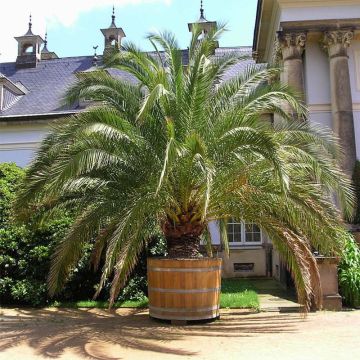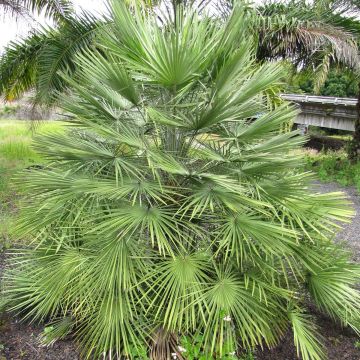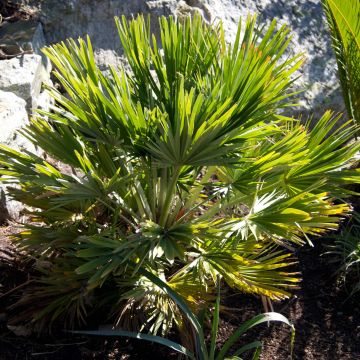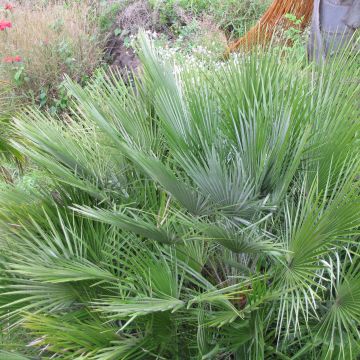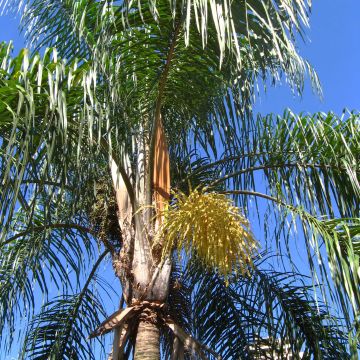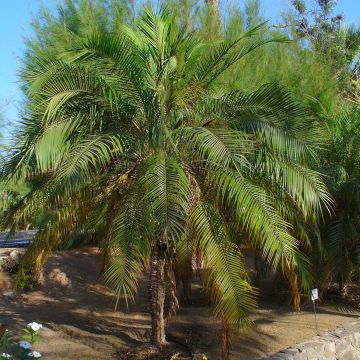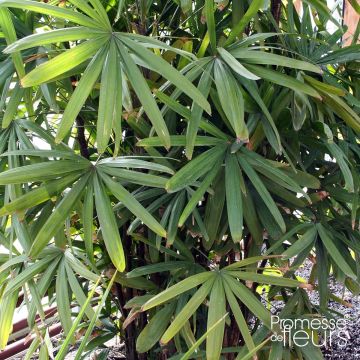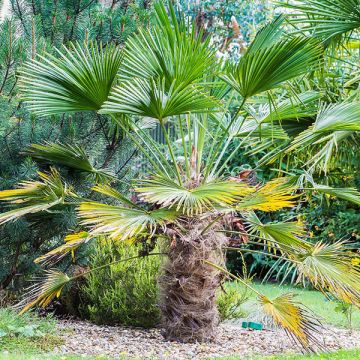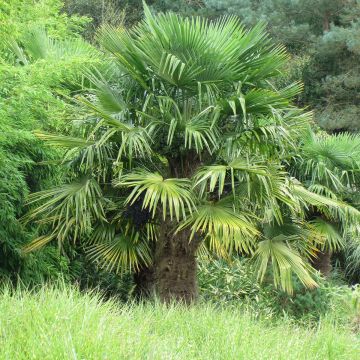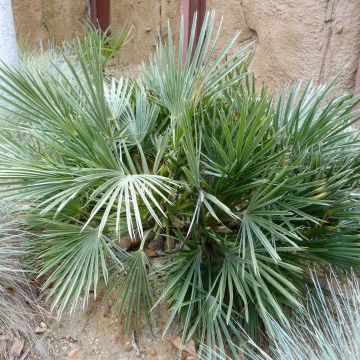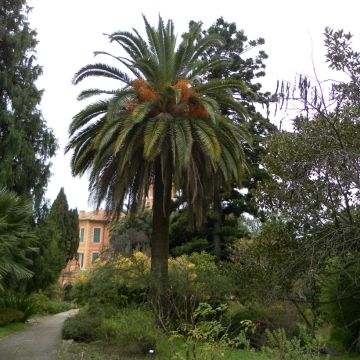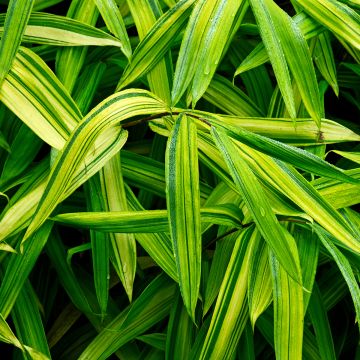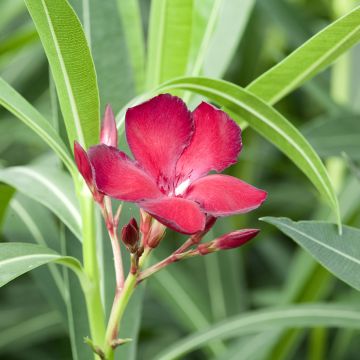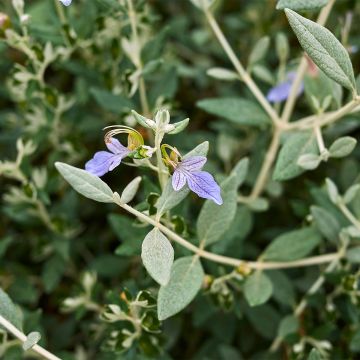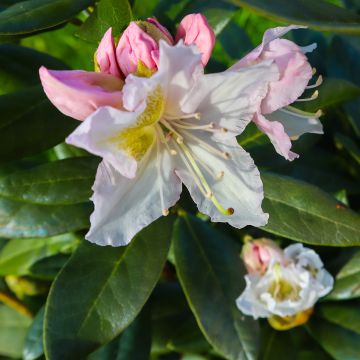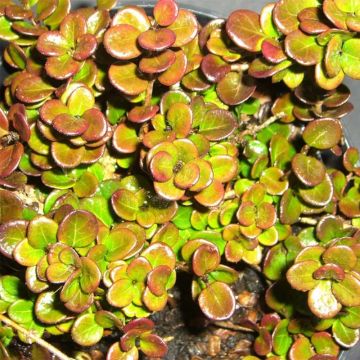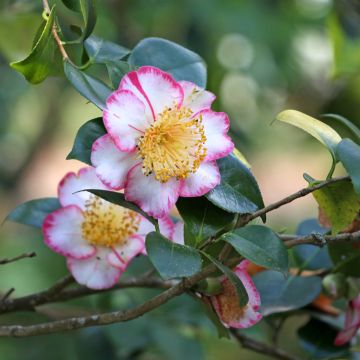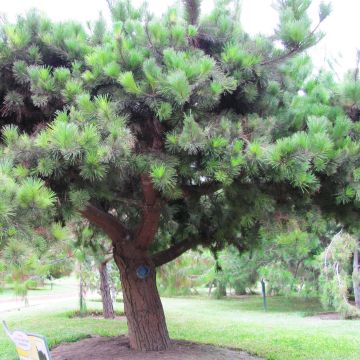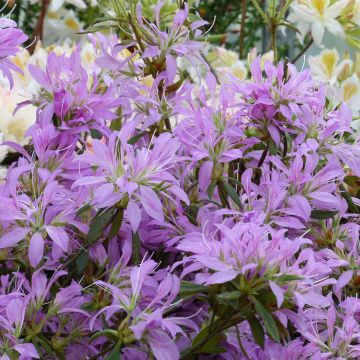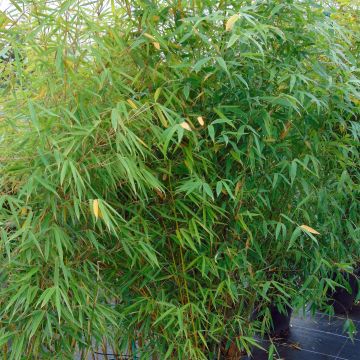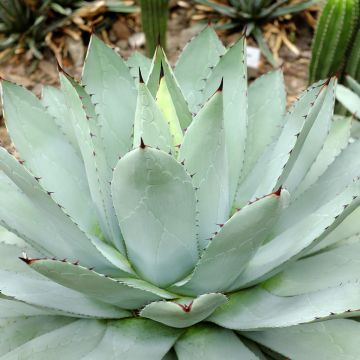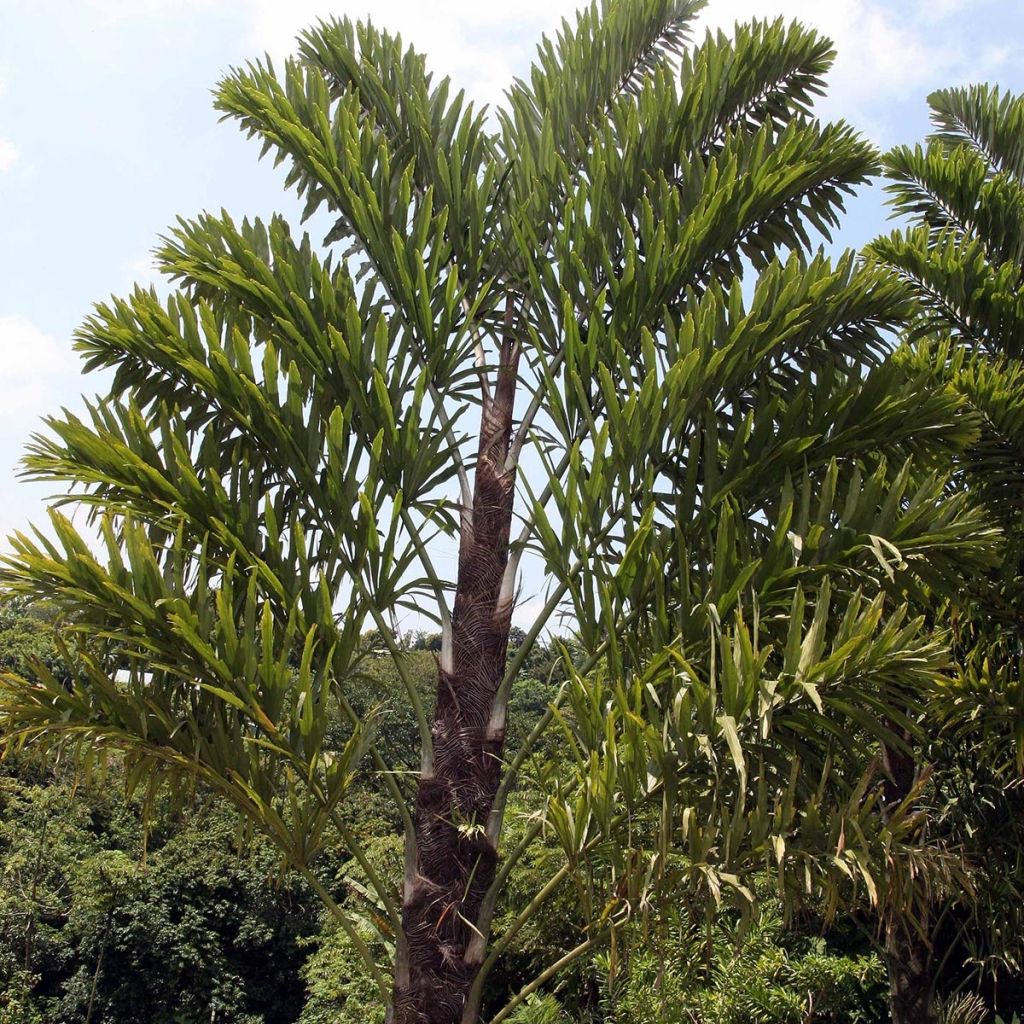

Wallichia disticha - Palmier
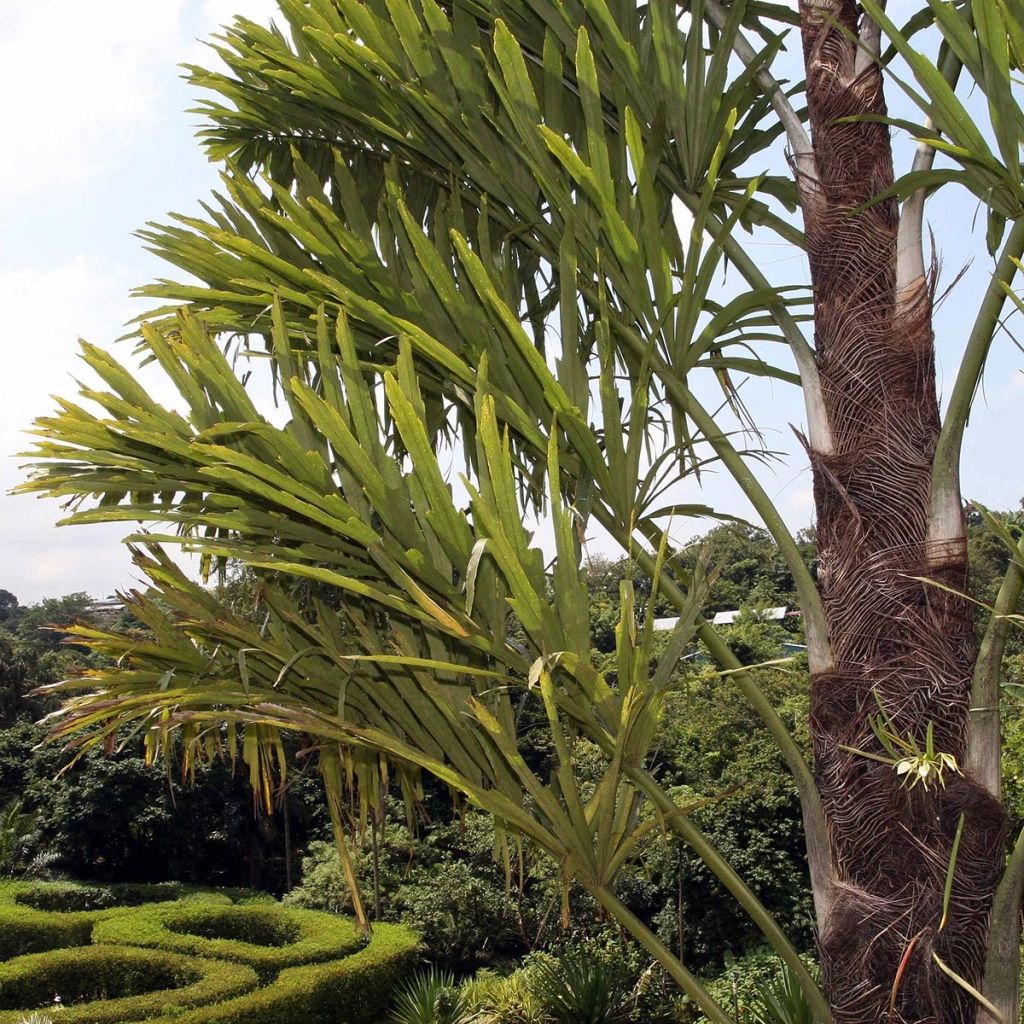

Wallichia disticha - Palmier
Wallichia disticha
Wallichia disticha
Why not try an alternative variety in stock?
View all →This plant carries a 24 months recovery warranty
More information
We guarantee the quality of our plants for a full growing cycle, and will replace at our expense any plant that fails to recover under normal climatic and planting conditions.
From €5.90 for pickup delivery and €6.90 for home delivery
Express home delivery from €8.90.
Does this plant fit my garden?
Set up your Plantfit profile →
Description
Wallichia disticha is a rather unique palm tree that comes from the forests of tropical Asia, where it grows on the foothills of the Himalayas. It is a medium-sized species, with a somewhat fantastic appearance reminiscent of certain bamboos or a traveller's palm. In this beautifully eccentric plant, the triangular leaflets end curiously in a fish tail. This Wallichia is not very resistant to frost but it is easy to cultivate indoors, amidst other luxuriant plants that naturally humidify the air, or in a temperate to tropical greenhouse.
Wallichia disticha belongs to the Arecaceae family. It is native to Myanmar, eastern India, and southern China. It is a shade-loving forest species found up to 1200 m (3937 ft) in altitude under a humid tropical climate. The plant likes fresh, rich and well-drained, as well as rocky, calcareous or acidic (granitic) soils, with a partially shaded exposure. Young plants take some time to establish themselves, then growth accelerates significantly. In the ground, Wallichia disticha can reach a height of 8 m (26 ft), but it will not exceed 3 m (10 ft) in height with a spread of 1.5 m (5 ft) if grown in a container or indoors in a greenhouse.
This palm develops a single trunk, called a stipe, which is rather thin (10-15 cm (4-6 in) in diameter), greyish in colour, and covered with brown to black interwoven fibres, with leaf scars. On the upper half of this stipe, large pinnate, upright leaves develop, measuring up to 4 m (13 ft) long and 60 cm (24 in) to 1.2 m (4 ft) wide. The leaf is divided into leaflets arranged on several planes, giving the leaf a very decorative feathery appearance. Each leaflet has a characteristic shape: long and triangular with a bifid tip. Their colour is bright green on the upper side and more greyish underneath. Flowering occurs in summer, on mature plants aged 10 to 15 years, and under favourable growing conditions. The inflorescences bear either male or female flowers, but they are present on the same plant and on the same stem. The flowers are grouped in large paniculate inflorescences at the axils of the leaves. The inflorescences of male flowers measure 90 cm (35 in) to 1.2 m (4 ft) long, while the pendulous inflorescences of female flowers measure 1.8 m (6 ft) to 2.4 m (8 ft) long. The fruits measure 2.2 cm (1 in) long and 1.5 cm (1 in) in diameter, and are reddish-brown in colour. This palm has a relatively short lifespan, around 15 years.
Wallichia disticha is undoubtedly a very beautiful specimen for collectors and enthusiasts of exotic plants, whether they are simply amateurs or experienced gardeners. It will make an impression in the veranda, greenhouse, or in a very bright room. It can be taken out on the terrace from May to September, after an acclimatisation period. Like all palm trees, it is difficult to combine with other plants due to its strong personality: reserve a corner by the pool or a good spot on the terrace, initially exposing it to shade so that it gradually adapts to the sun. Surround it with Phormium – visual, sober, and colourful – with precise and geometric agaves, or with Cordyline, for example.
Report an error about the product description
Wallichia disticha in pictures
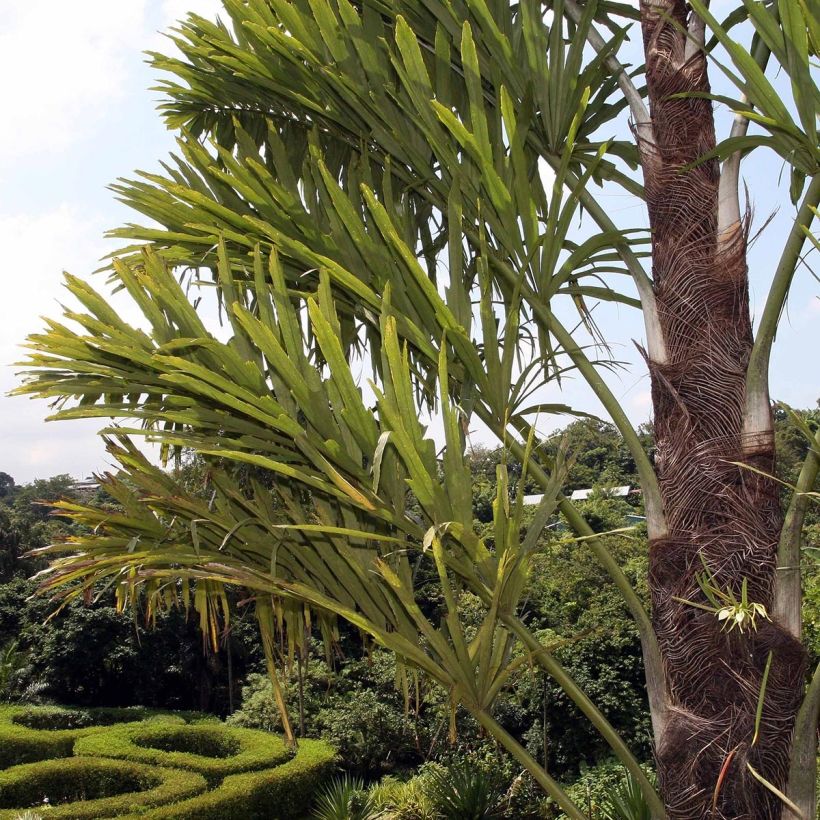

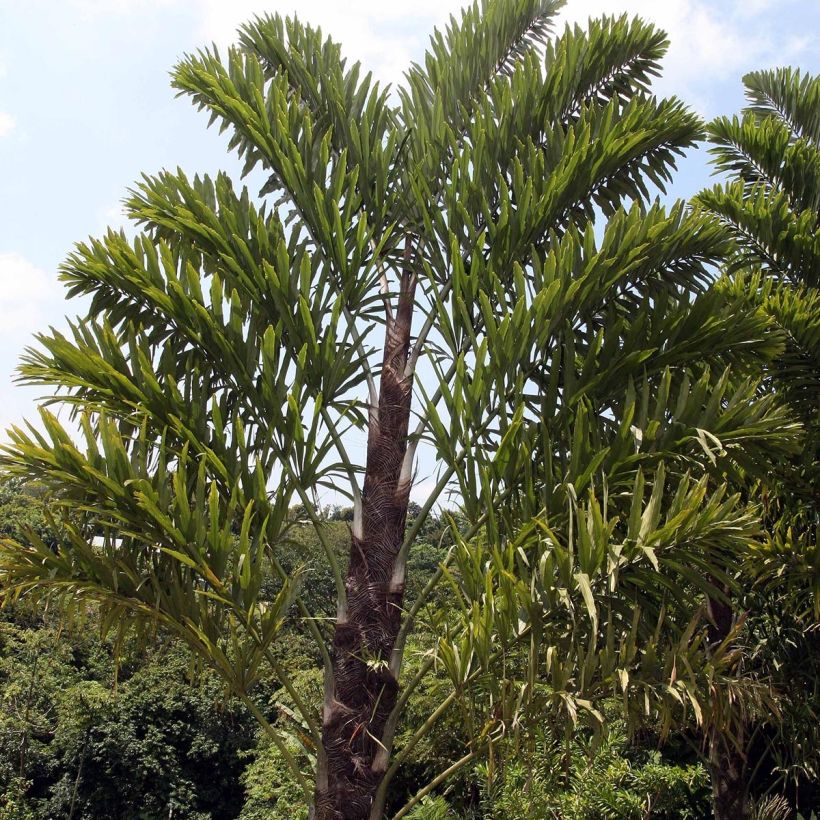

Plant habit
Flowering
Foliage
Botanical data
Wallichia
disticha
Arecaceae (Palmae)
India
Other Palm trees A to Z
Planting and care
This Wallichia disticha palm tree is a frost-sensitive tropical plant that thrives in warm and humid environments and perishes below 0 °C (32 °F). It adapts well to container or large pot cultivation. Young plants are sensitive to direct sunlight, while adult specimens tolerate it better but prefer filtered sunlight. It adapts to any well-drained and fertile soil (calcareous or acidic), remaining moist throughout the growth period from spring to autumn. In winter, watering should be slightly reduced, but the growing medium should never completely dry out. It requires little maintenance, except for pruning the oldest fronds close to the stem if necessary.
Pot cultivation:
Choose a large pot or container with drainage holes, with a capacity of 40 litres. Prepare a mixture consisting of 25% garden soil, 50% compost or humus and 25% sand. Add some crushed horn. Mix well. Partially fill your container, after placing a layer of drainage material at the bottom (clay pellets, gravel, broken terracotta pots, etc.). Place your palm tree on the mixture, ensuring that the collar (the area where the roots originate) does not exceed the pot's rim but is not buried too deep either. Add the rest of the mixture around the root ball, firming it down. Water in stages to thoroughly saturate the growing medium and eliminate air pockets.
Place your palm tree in a very bright location, avoiding direct harsh sunlight (not behind a window or glass patio door). In winter, the optimal temperature in the greenhouse or conservatory should be between 10 and 15 °C (50 and 59 °F). Mist the foliage regularly to counteract dry air. Do not hesitate to group your exotic plants together, as they will contribute to air humidity and create a favourable environment. Clean the leaves with a sponge to remove dust. When outdoors, initially place it in shade and then in partial shade to protect its foliage. After two weeks in partial shade, gradually expose it to sunlight. Apply complete liquid fertiliser for green plants once a month from March to August.
Planting period
Intended location
Care
This item has not been reviewed yet - be the first to leave a review about it.
Evergreen shrubs
Haven't found what you were looking for?
Hardiness is the lowest winter temperature a plant can endure without suffering serious damage or even dying. However, hardiness is affected by location (a sheltered area, such as a patio), protection (winter cover) and soil type (hardiness is improved by well-drained soil).

Photo Sharing Terms & Conditions
In order to encourage gardeners to interact and share their experiences, Promesse de fleurs offers various media enabling content to be uploaded onto its Site - in particular via the ‘Photo sharing’ module.
The User agrees to refrain from:
- Posting any content that is illegal, prejudicial, insulting, racist, inciteful to hatred, revisionist, contrary to public decency, that infringes on privacy or on the privacy rights of third parties, in particular the publicity rights of persons and goods, intellectual property rights, or the right to privacy.
- Submitting content on behalf of a third party;
- Impersonate the identity of a third party and/or publish any personal information about a third party;
In general, the User undertakes to refrain from any unethical behaviour.
All Content (in particular text, comments, files, images, photos, videos, creative works, etc.), which may be subject to property or intellectual property rights, image or other private rights, shall remain the property of the User, subject to the limited rights granted by the terms of the licence granted by Promesse de fleurs as stated below. Users are at liberty to publish or not to publish such Content on the Site, notably via the ‘Photo Sharing’ facility, and accept that this Content shall be made public and freely accessible, notably on the Internet.
Users further acknowledge, undertake to have ,and guarantee that they hold all necessary rights and permissions to publish such material on the Site, in particular with regard to the legislation in force pertaining to any privacy, property, intellectual property, image, or contractual rights, or rights of any other nature. By publishing such Content on the Site, Users acknowledge accepting full liability as publishers of the Content within the meaning of the law, and grant Promesse de fleurs, free of charge, an inclusive, worldwide licence for the said Content for the entire duration of its publication, including all reproduction, representation, up/downloading, displaying, performing, transmission, and storage rights.
Users also grant permission for their name to be linked to the Content and accept that this link may not always be made available.
By engaging in posting material, Users consent to their Content becoming automatically accessible on the Internet, in particular on other sites and/or blogs and/or web pages of the Promesse de fleurs site, including in particular social pages and the Promesse de fleurs catalogue.
Users may secure the removal of entrusted content free of charge by issuing a simple request via our contact form.
The flowering period indicated on our website applies to countries and regions located in USDA zone 8 (France, the United Kingdom, Ireland, the Netherlands, etc.)
It will vary according to where you live:
- In zones 9 to 10 (Italy, Spain, Greece, etc.), flowering will occur about 2 to 4 weeks earlier.
- In zones 6 to 7 (Germany, Poland, Slovenia, and lower mountainous regions), flowering will be delayed by 2 to 3 weeks.
- In zone 5 (Central Europe, Scandinavia), blooming will be delayed by 3 to 5 weeks.
In temperate climates, pruning of spring-flowering shrubs (forsythia, spireas, etc.) should be done just after flowering.
Pruning of summer-flowering shrubs (Indian Lilac, Perovskia, etc.) can be done in winter or spring.
In cold regions as well as with frost-sensitive plants, avoid pruning too early when severe frosts may still occur.
The planting period indicated on our website applies to countries and regions located in USDA zone 8 (France, United Kingdom, Ireland, Netherlands).
It will vary according to where you live:
- In Mediterranean zones (Marseille, Madrid, Milan, etc.), autumn and winter are the best planting periods.
- In continental zones (Strasbourg, Munich, Vienna, etc.), delay planting by 2 to 3 weeks in spring and bring it forward by 2 to 4 weeks in autumn.
- In mountainous regions (the Alps, Pyrenees, Carpathians, etc.), it is best to plant in late spring (May-June) or late summer (August-September).
The harvesting period indicated on our website applies to countries and regions in USDA zone 8 (France, England, Ireland, the Netherlands).
In colder areas (Scandinavia, Poland, Austria...) fruit and vegetable harvests are likely to be delayed by 3-4 weeks.
In warmer areas (Italy, Spain, Greece, etc.), harvesting will probably take place earlier, depending on weather conditions.
The sowing periods indicated on our website apply to countries and regions within USDA Zone 8 (France, UK, Ireland, Netherlands).
In colder areas (Scandinavia, Poland, Austria...), delay any outdoor sowing by 3-4 weeks, or sow under glass.
In warmer climes (Italy, Spain, Greece, etc.), bring outdoor sowing forward by a few weeks.


































